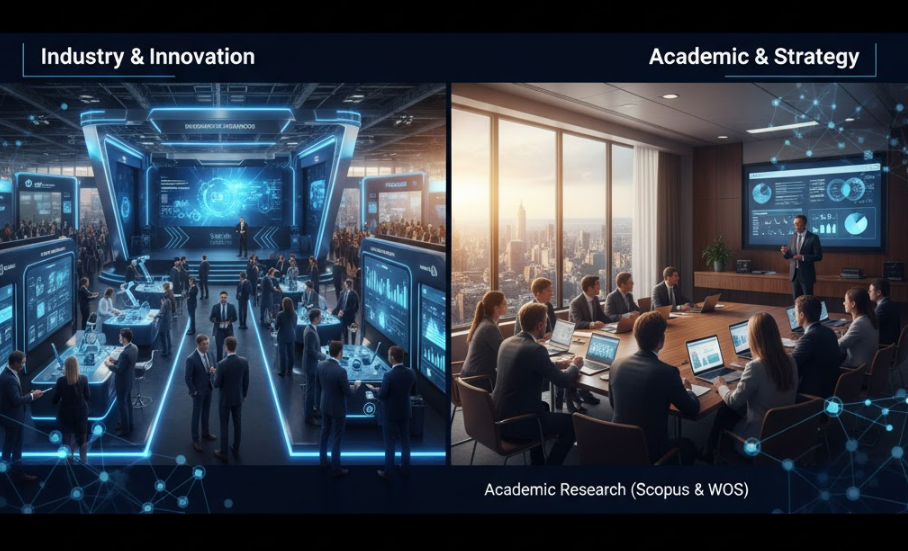

1 views||Release time: Nov 13, 2025
In the global economy, business conferences are critical ecosystems for growth and innovation. Unlike academic conferences, which are primarily focused on peer-reviewed publication, business conferences are dynamic events centered on commercial strategy, B2B networking, product launches, and professional development.
For executives, entrepreneurs, marketers, and industry professionals, attending the right event can provide a year's worth of market intelligence and high-value connections. This guide explores the different categories of business conferences and how to select the best one for your professional goals.

The return on investment (ROI) for a business conference is measured in connections and opportunities.
High-Level Networking: These events bring together decision-makers, investors, and potential clients in one physical location, offering opportunities for face-to-face interaction that digital marketing cannot replicate.
Market & Competitive Intelligence: Keynote presentations and "state of the industry" panels feature leaders and analysts who share insights into emerging trends, consumer behavior, and competitive landscapes.
Lead Generation & Sales: For B2B companies, conference expos are the primary venue for demonstrating products, capturing new leads, and closing deals.
Professional Development: Many conferences offer skill-based workshops (e.g., in digital marketing, sales, or leadership) that provide tangible new strategies and "best practices" for your team.
The term "business conference" is broad. The event you choose depends entirely on your goals. Here are the main types:
These are massive-scale events focused on a specific vertical. The primary goal is product showcases, sales, and B2B partnerships.
Example: CES (Consumer Electronics Show) (Las Vegas, USA)
Example: MWC (Mobile World Congress) (Barcelona, Spain)
Who Attends: Manufacturers, suppliers, retailers, industry press, and marketers.
These are high-cost, high-prestige events designed for executives (C-Suite, VPs) and entrepreneurs. The focus is on "big picture" ideas, economic forecasts, and high-level networking.
Example: World Economic Forum (Davos)
Example: Gartner Symposium/Xpo
Who Attends: CEOs, CIOs, government leaders, and major investors.
These events are targeted at a specific job function (e.g., marketing, human resources, or sales). The goal is professional development and learning new tactics.
Example: INBOUND (for marketers)
Example: SHRM Annual Conference (for HR professionals)
Who Attends: Managers, specialists, and team leaders looking to improve their skills.
This is a critical category that bridges the gap between commerce and academia. These conferences are run by academic associations and are essential for business school faculty, researchers, and PhD students.
Example: AOM (Academy of Management) Annual Meeting
Example: AMA (American Marketing Association) Conference
The Goal: The objective here is not sales, but the presentation of peer-reviewed research.
Key Feature: The proceedings and affiliated journals for these conferences are often indexed in major academic databases like Scopus and Web of Science (WOS), making them critical for a researcher's publication record.
Define Your Goal: Are you trying to make sales, learn a new skill, or publish a paper? Your answer will immediately eliminate 80% of the options.
Analyze the Speakers: Look at the keynote and panel speakers. Are they C-level executives (strategy), industry analysts (trends), or university professors (research)?
Review the Agenda: Is the schedule dominated by an "Expo Hall" (sales-focused) or by "Breakout Sessions" and "Workshops" (learning-focused)?
Check the Sponsors & Exhibitors: The sponsor list is the most reliable clue to the conference's true purpose. It shows you exactly which companies value this audience.
By identifying your goal and understanding these categories, you can strategically plan your 2026 conference schedule for maximum professional and commercial impact.